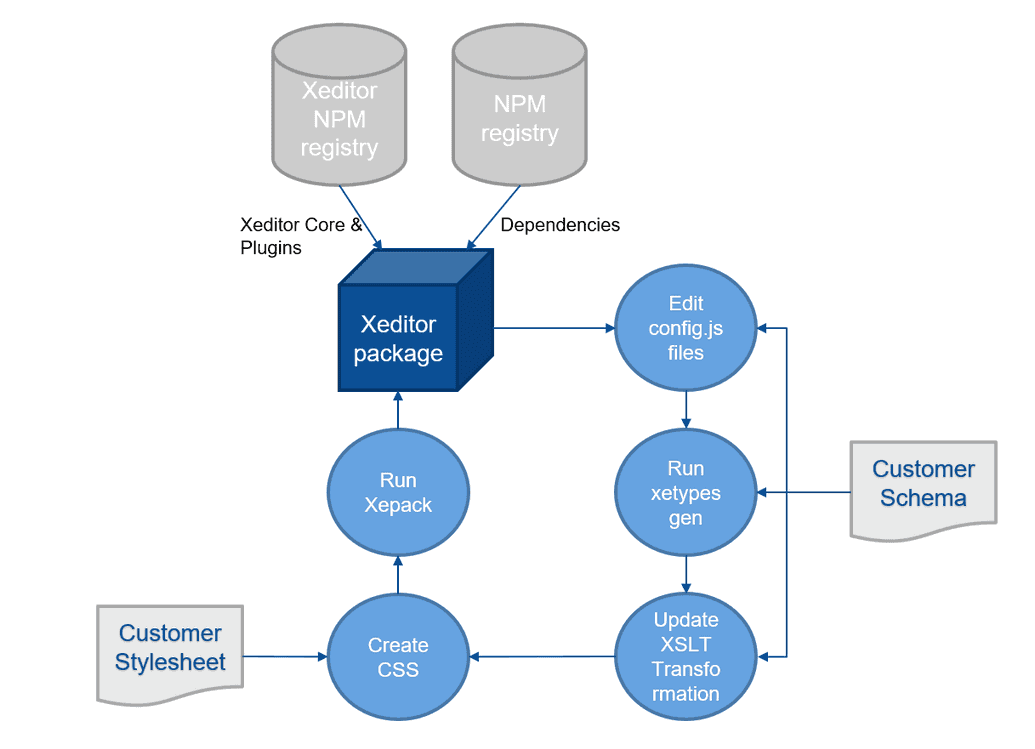Basic concepts
Xeditor is an intuitive and lightweight web-based XML authoring tool. It is also a powerful developer framework that you can customize and integrate into any other system (CMS, Google Drive, etc.).
You can create, edit, and review structured content easily and quickly with Xeditor. Furthermore Xeditor offers a technical and an intuitive writing experience for all kind of users. Technical writers use the familiar tag view mode or our native XML editor plugin. Non-technical writers benefit from a Word-like interface and the ability to collaborate anytime, anywhere.
Whether online or offline: With Xeditor you can access your documents via your browser at any time so you can continue your work even if the Internet connection is lost. The changes made are simply transferred during the next synchronization.
Schema-based documents
To edit XML you need to provide a bunch of rules the editor validates against. Those rules are provided by XML schemas. Xeditor supports the two most used schema types: DTD (Document Type Definition) and XSD (XML Schema Definition).
Although XSD is meanwhile the way to go for XML validation since DTD is mostly used for SGML, DTDs are still often used in some branches and is supported by Xeditor.
Internally, Xeditor uses a JavaScript based representation of your schema in order to perform its validation, and determine which elements can be inserted at which position. This schema representation is generated based on your schema, the instructions on how to do this can be found here.
If you want to learn more about Xeditors internal validation, see the chapter about realtime validation.
Packages and modules
Xeditor itself is divided in multiple packages and modules and plugins. Those are bundled together to one application.
Package delivery
Xeditor is delivered using our private NPM repository which can be found here.

